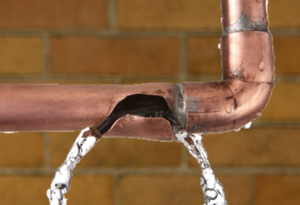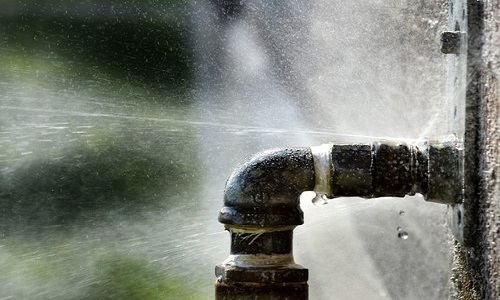By Guide to Closing Your Main Water Line Due to a Burst Pipe
Details HereHow do you really feel in relation to Steps to Take When a Pipe Bursts?

You should know how to shut off your primary water line if you deal with a ruptured pipeline. Don't await a plumbing emergency prior to finding out exactly how to get this done. Besides, aside from emergency leaks, you will require to turn off your primary water valve for plumbing fixings or if you leave for a long trip. Learn more about it in this tiny guide.
Must This Constantly Be Turn off?
Apart from emergency situations, fixings, or long holidays, you may not need to turn off the major shutoff. As an example, so one component has problems, you can turn off the branch valve because area. In this manner, you can still use water in other parts of your house. For finest results, call a reliable plumber for emergencies.
Why Must You Close the Main Line Off?
Familiarizing yourself with how your mainline switches on and off can save you during an emergency. For instance, when a pipeline instantly bursts in your house, you'll be besieged with panic. Thus, you can easily shut the shutoff off as well as protect against even more damages if you recognize what to do. Furthermore, shutting this off assures you don't need to manage a sudden flooding in your home.
In addition to that, shutting and opening up the shutoffs once in a while guarantees they do not get stuck. It is additionally the most effective time for you to inspect for rust or various other broken links. Moreover, make it an indicate inform various other member of the family on what to do. This makes normal maintenance as well as handling emergencies a lot easier. You can potentially conserve yourself thousands of dollars in repairs.
Where is This Main Valve Situated?
The primary water line supply can vary, so you might need to locate time to determine where it is. Unfortunately, when your residence is getting drenched because of a burst pipeline, you do not have the high-end of time during an emergency. Hence, you should prepare for this plumbing dilemma by learning where the shutoff is located.
This shutoff valve might appear like a ball shutoff (with a lever-type manage) or a gateway valve (with a circle faucet). Positioning depends on the age of your home and the environment in your area. Examine the adhering to usual areas:
What to Do When a Pipe Bursts in Your Home
A burst pipe is one of a homeowner's worst nightmares. Not knowing the signs and being unprepared for this plumbing issue can result in more water damage and clean up. Here are the warning signs of a pipe about to burst and the steps you can take if it happens.
Warning Signs for Burst Pipes
Rusty, discolored water with a bad smell Puddles under your sinks Abrupt changes in water pressure A spike in your water bill Clanging noises coming from pipes behind the walls What to Do When a Pipe Bursts
Turn off your water. The sooner you do this, the better. Shutting off your main valve will help minimize the damage to your home.
Drain the faucets. After the water has been turned off, drain the remaining water by opening your faucets. Doing so will help prevent areas from freezing and also relieve pressure within your pipe system to avoid more bursts.
Locate the burst pipe. Look for bulging ceilings, warping and other signs of where the water damage has occurred. Once you locate the pipe, you will be able to determine if it is a small crack that can be patched or a major repair that needs to be dealt with right away.
Call a professional. If you need significant repairs, contact a professional to come in as soon as possible. At Mr. Rooter Plumbing of Oneida, we offer 24/7 emergency service for your convenience.
Document the damage. If you have extensive pipe damage, be sure to take photos of the affected areas so you can document a claim with your insurance. Take close-up photos of the damage and use a measuring tape to show how high the water is. You should also take photos from different angles for a wider picture of the affected areas.
Start cleaning. After you have documented the damage, start cleaning up the water as soon as possible. The longer the water sits, the higher the chance that mold will develop.
https://www.mrrooter.com/oneida/about-us/blog/2020/june/what-to-do-when-a-pipe-bursts-in-your-home/

I recently found that piece on What Do I Do If I Have A Burst Pipe In My Home? when doing a lookup on the web. Remember to take a moment to promote this blog posting if you enjoyed it. Thanks for taking the time to read it.
Expertise? One call away.